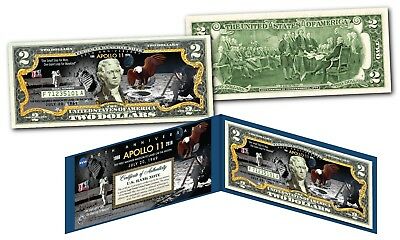-40%
Apollo 17 Astronauts Letter, Picture, Stickers, to the Employees of KSC Florida
$ 7.91
- Description
- Size Guide
Description
Apollo 17 Astronauts Letter, Picture, Stickers, to Employees of the Kennedy Space Center“The Apollo 17 Mission is the Sixth and Final Scientific Lunar Expedition Mission Planned in the Apollo Program”
The following items were given to All Kennedy Space Center, Apollo 17 Team Members
Letter dated November 14
th
1972, has the Government Watermark dated 1970 has the Signatures of each crewmember
A 3
11/16th
Mission sticker
Rare “Apollo 17 Team Member Kennedy Space Center”, 3
3/4th
x 1
7/8th
inch sticker
Apollo 17 “Prime Crew” mission picture (MSCL-92)
All in Very Good used condition, all exhibits the mark of a Paper Clip that had been in place for a Long Time, but not really damaging to any of the items (look at the tops of each item).
Please see all attached pictures.
Shipping includes a Tracking Number
Apollo 17
Mission Objective
The lunar landing site was the Taurus-Littrow highlands and valley area. This site was picked for Apollo 17 as a location where rocks both older and younger than those previously returned from other Apollo missions, as well as from Luna 16 and 20 missions, might be found.
The mission was the final in a series of three J-type missions planned for the Apollo Program. These J-type missions can be distinguished from previous G- and H-series missions by extended hardware capability, larger scientific payload capacity and by the use of the battery-powered Lunar Roving Vehicle, or LRV.
Scientific objectives of the Apollo 17 mission included, geological surveying and sampling of materials and surface features in a preselected area of the Taurus-Littrow region; deploying and activating surface experiments; and conducting in-flight experiments and photographic tasks during lunar orbit and transearth coast. These objectives included deployed experiments, such as the Apollo Lunar Surface Experiments Package, or ALSEP, with a heat flow experiment; lunar seismic profiling, or LSP; lunar surface gravimeter, or LSG; lunar atmospheric composition experiment, or LACE; and lunar ejecta and meteorites, or LEAM. The mission also included lunar sampling and lunar orbital experiments. Biomedical experiments included the Biostack II experiment and the BIOCORE experiment.
Apollo 17 hosted the first scientist-astronaut to land on moon: Harrison Schmitt. The sixth automated research station was set up. The lunar rover vehicle traversed a total of 30.5 kilometers. Lunar surface-stay time was 75 hours, and lunar orbit time 17 hours. Astronauts gathered 110.4 kilograms, or 243 pounds, of material.
Crew
Eugene A. Cernan, Commander
Harrison H. Schmitt, Lunar Module Pilot
Ronald E. Evans, Command Module Pilot
Backup Crew
John W. Young, Commander
Charles M. Duke Jr., Lunar Module Pilot
Stuart A. Roosa, Command Module Pilot
Payload
America (CM-114)
Challenger (LM-12)
Launch
Dec. 7, 1972; 12:33 a.m. EST
Launch Pad 39A
Saturn-V SA-512
High Bay 3
Mobile Launcher Platform-3
Firing Room 1
The CSM, LM and S-IVB booster stage were inserted 11 minutes, 53 seconds after launch into an Earth parking orbit of 91.2 by 92.5 nautical miles. After two revolutions, at 8:45:37 a.m. GMT, Apollo 17 was inserted into translunar coast.
Orbit
Altitude: 105.86 miles
Inclination: 28.526 degrees
Orbits: 75 revolutions
Duration: 12 days, 13 hours, 52 minutes
Surface Time: 75 hours
Distance: 1,484,933.8 miles
Lunar Location: Taurus-Littrow
Lunar Coordinates: 20.16 degrees north, 30.77 degrees east
Landing
Dec. 19, 1972
Pacific Ocean
Recovery Ship: USS Ticonderoga
The Last Moon Landing
On December 11, 1972, Cernan and Harrison Schmitt landed the Apollo 17 on the surface of the moon and became the last two people to set foot on the moon. On that event, Cernan boarded the spacecraft after Schmitt and is officially recognized as the last man on the moon. Forty-six years later, no man has set foot on the moon again. Cernan died on January 16, 2017, aged 82.
Apollo 17
Cernan chose to lead his crew aboard the Apollo 17 although NASA could not guarantee that the next moon landing was on course. Escalating cost saw NASA cancel the flights of Apollo 15 and 19 to the lunar surface. The geologist community mounted pressure on NASA to land the only geologist of the team to the moon’s surface. Harrison Schmitt was made a priority astronaut and alongside Cernan flew the Apollo 17 to the moon in what would become the last moon landing to date. Apollo 17 stayed for three days on the moon while the two astronauts completed a 22-mile ride on the surface using the Lunar Rover. They collected 75 lb of samples.















